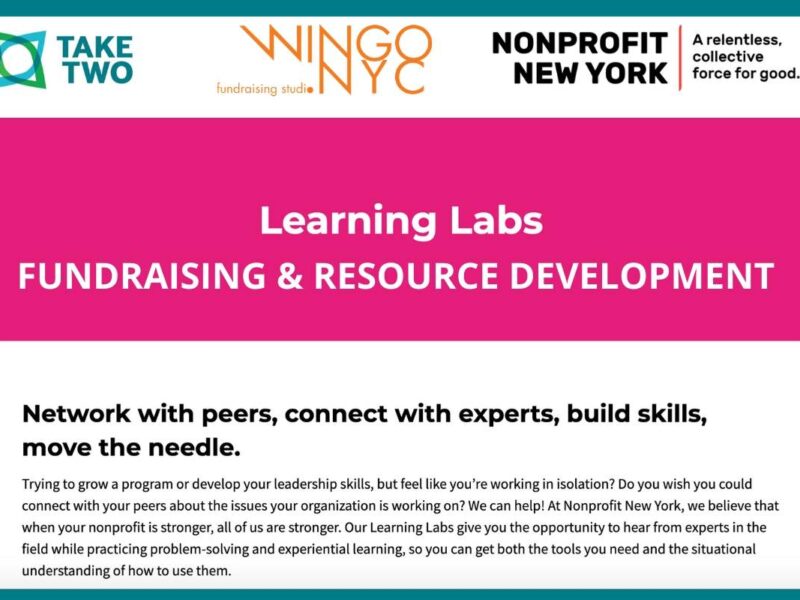
Don’t Change For Your Funders…or Should You?
“We shouldn’t chase funding. We shouldn’t change our mission and work to be more appealing to donors.” We hear this from nonprofit leaders from time to time at TakeTwo. On paper, it is totally true. But, in reality, it is more complicated than that.
Often times, nonprofit leaders function in a very insular, unquestioning environment. People are appreciative of the good work they are doing and know they are passionate about their work and cause. Many times, nonprofit leaders are involved in a cause because it is personally meaningful or important. Thus, criticism, confrontation, or questioning of their cause by colleagues, friends, or family members may seem cruel or unnecessary.
However, if a nonprofit is finding it difficult to raise funds from major donors, institutions, or private foundations, it needs to take time to reflect on that and find out why.
Obviously, something has to change at the nonprofit, but what? The answer to that question may be typical – things we have heard a thousand times – i.e., the organization needs a stronger Board, a savvy Executive Director, a Director of Development, or a better public face (new brand, logo, name, website).
But, many times the answer lies in the nonprofit’s approach to the problem it intends to fix. Deep within the hearts and minds of its community of supporters lies dissent with its approach, or a lack of connection to its programming. This nonprofit needs to take some time – and get some help – in finding out why, and what it can do to adjust its work to better reflect the community it is looking to engage and serve.
Running a nonprofit is a community effort. Every nonprofit needs a whole bunch of people to get the work done and to secure the money behind it. So, nonprofit leaders should also involve key community members in the shaping of programming. There is no reason to make mission and programming decisions in a vacuum. Reach out to experts in the field and leaders in philanthropy who spend every day fighting for the same cause as the nonprofits asking for support. Find out what others are doing in your field, how your mission complements that work, and what collaborations are possible. Explore as to whether or not your approach to achieving your mission remains relevant and inspired.
And most importantly, when you hear the word “no” to requests for support, ask why, and pay close attention to the answers. Within them, you might gain some insight as to how to make your work more effective and attractive to everyone. In other words, you may have to change a little to reflect the outside world – and that is not at all a bad thing.





